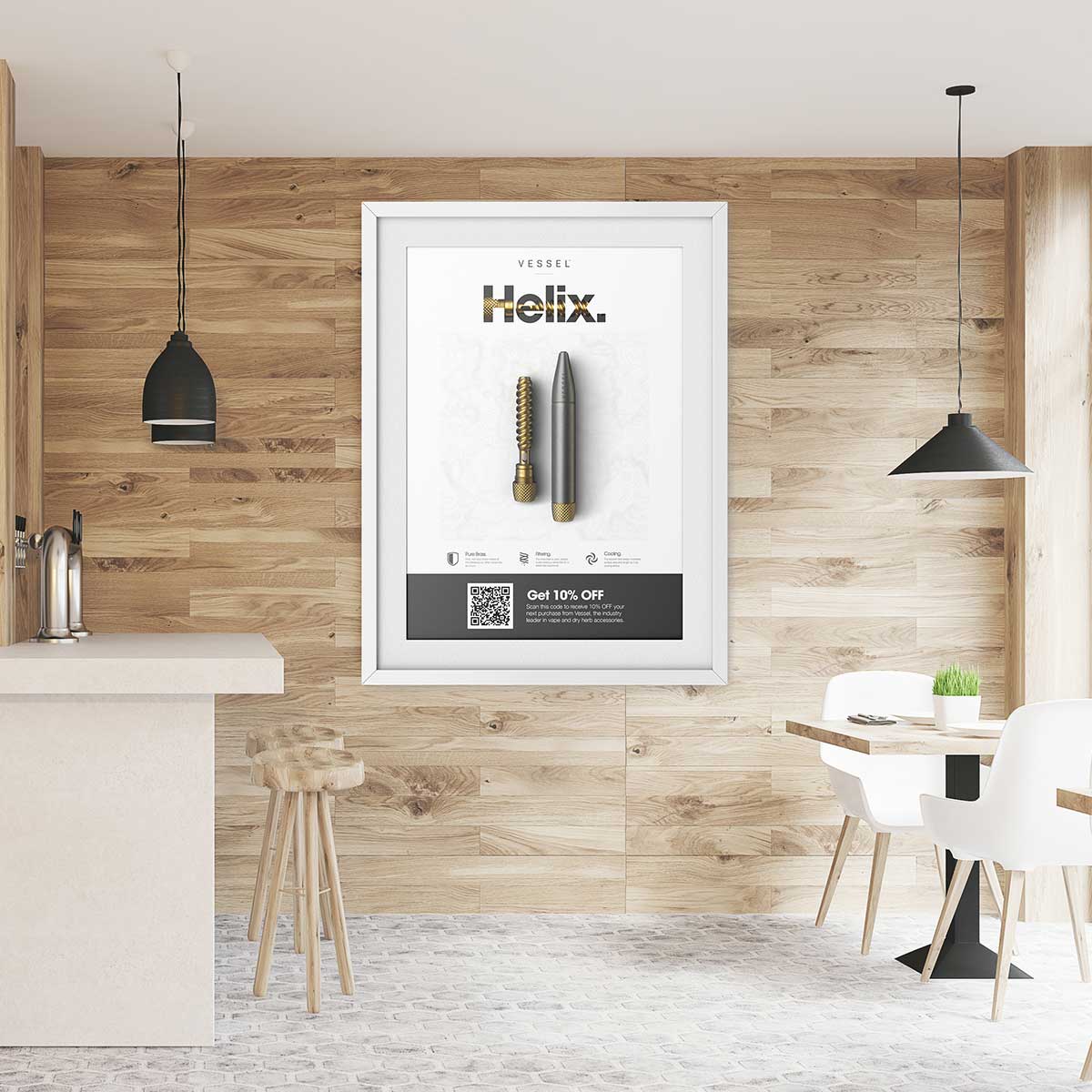Everything You Need to Know About Bongs
Bongs are a smoker’s best friend. These types of pipes utilize water filtration for cooler, smoother hits.
Whether you’re new to the bong world or a seasoned smoker, this guide will walk you through everything there is to know about using a bong--including the best way to pick one out for yourself!
What is a bong?
Often referred to generally as water pipes, a bong is a pipe that filters smoke through water.
Bongs generally have four main parts: a mouthpiece to inhale through, a bowl to hold your herb, a downstem that connects the bowl to your water, and a chamber that holds that water (and, later on, smoke).
How to use a bong
Though they look complex, bongs are straightforward and easy to use.
- Add water to your bong. Add enough water to submerge your downstem.
- Grind your herb and pack the bowl. Place the finely ground herb in the bowl of your bong. Pack, don’t press: ensure there will be enough space for airflow.
- Prepare to hit. Place your bowl into the downstem. Place your mouth within the opening of the mouthpiece.
- Light and inhale. Inhale through the mouthpiece while lighting the herb. Smoke will begin to build in the chamber as you inhale.
- Release the chamber. Remove the bowl piece from the downstem and inhale. This step releases the smoke from the chamber into your lungs.
- Exhale. Repeat.
Pros and cons
Like any smoking device, bongs have their pros and their cons.
Pros
- Water Filters Smoke. The biggest pro: toxins, debris, “scoobs,” and tar are all filtered out through the water chamber when a bong is used. This makes for a cleaner experience--and helps to keep some of that tar out of your lungs.
- Big, Smooth Hits. Bongs are known for producing dense and powerful smoke. They’re also naturally a cooler alternative to dry smoking. Water doesn’t just filter toxins: it makes for a cooler smoking experience on your throat.
- Customizable. As mentioned earlier, bongs can be made in all colors, shapes, and sizes. Think of your favorite fruit, animal, television show, etc. and there’s almost definitely a bong out there related to your interests.
The aesthetic isn’t the only thing that’s customizable. Make your smoking experience unique to you by adding percolator or recycler attachments.
Cons
- Not Travel-Friendly. Let’s admit it: bongs are probably the least portable pipe on the market. Because they need to have at least one chamber big enough to hold water, these devices aren’t suitable for travel.
- Frequent Maintenance. Like any pipes, bongs must be cleaned frequently. Otherwise, the water can start to smell and even mold.
Types of bongs
Bongs are super versatile: they come in a wide variety of materials and countless shapes and sizes.
The most common materials that make up most bongs include glass, silicone, acrylic, and ceramic. Each material comes with its own pros and cons.
-
Glass: Glass is the most popular material for bongs. It’s a fan favorite for a reason: not only do glass bongs provide a cleaner, more pure taste than other materials, but they’re also super customizable. Glass can be blown into infinite shapes, sizes, and colors.
Because of the customizability of glass, many bongs have glass features that enhance functionality. These features, such as percolators and ice catchers, add extra filtration to the pipe for a smoother, cooler hit.
While it is the most popular material, glass still has its downfalls. Glass is the most easily breakable of any bong material. Though some American-made bongs are made with a stronger, more heat resistant borosilicate glass, glass is never indestructible. -
Silicone: Silicone is also a popular material choice for bong users. Unlike glass bongs, silicone bongs are shatter-proof and pretty bendy: that makes them super easy for on-the-go. Their flexibility also makes them super easy to clean. Additionally, silicone runs more affordably than glass
Nevertheless, this material also has its cons. These bongs are far less aesthetically pleasing than glass. These pipes characteristically have less air flow than glass pipes, meaning the material could affect the taste of the smoked herb. - Acrylic: Acrylic bongs are borderline indestructible and super affordable. However, acrylic bongs are known for tainting the flavor of the smoke.
- Ceramic: Ceramic bongs have a lot of the same great qualities as glass: they have a neutral flavor, and are very aesthetically pleasing. However, these pipes run fairly heavy and can crack if handled roughly.
Bongs also come in countless shapes and designs. Some popular shapes have unique features and benefits.
- Straight Tube: The classic bong, these pipes are easiest to clean and make for larger hits.
- Beaker: Just like it sounds, these guys look straight out of the lab. With a wider chamber and a narrower tube, beaker bongs generate lots of smoke. (They’re also less likely to be knocked over).
- Zig Zag: Bongs made in the zig zag style aren’t just cool looking: they also serve as a splash guard, preventing any water from getting drawn from the chamber while you’re inhaling.
- Recycler/Percolator: These bongs all take the smoke through multiple filtration processes before it reaches the mouthpiece. Whether it’s multiple chambers or a laced glass percolator, these bongs make for even smoother hits.
How to shop for a bong
So far, this guide has given you plenty to consider when shopping for a bong. Material, shape, and size are all extremely important factors to keep in mind. These factors will also heavily impact the price of the bong.
Additionally, consider how the bong will be used. If used once or multiple times daily, it might be worth it to invest in a sturdier piece. If frequently used for group sessions as opposed to solo smoking, it might be wise to consider bongs with larger chambers that produce more smoke.
How to clean your bong
Like any pipes, bongs should be cleaned frequently to maximize lifetime and efficiency. Follow these steps to make sure your bong is properly cleaned.
- Take apart your bong.
- Take out removable pieces. Remove your bowl and downstem from the main body of the pipe.
- Place bowl and downstem in a ziploc bag.
- Add solution. Add coarse salt, a little bit of warm water, and enough isopropyl alcohol to submerge these pieces.
- Add this salt-alcohol solution into the bong.
- Shake. Shake the bong. Shake the bag.
- Rinse. Rinse your pieces with warm water.
Allowing your bong to sit in the solution overnight will decrease scrubbing and get your bong looking spotless and shining.
To sum it up
Bongs are a super popular smoking device for a reason. All the power without all the scratch, bongs filter smoke through water for a smoother, cooler experience. A customizable smoking experience, use this guide to help you find your perfect bong.
FAQs
Should beginners use bongs?
Beginners can totally use bongs! Start with small hits and work your way to big, dense clouds.
What are the best bongs for beginners?
Smaller bongs are recommended for beginners. They require less lung capacity to operate properly.
Do big or small bongs get you higher?
In short, bigger bongs have better air flow, meaning denser, more powerful hits.
What should I know before buying a bong?
Bongs are super customizable! Consider material, shape, size, and price primarily before buying a bong.








Leave a comment (all fields required)